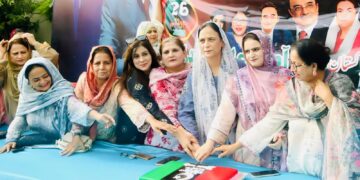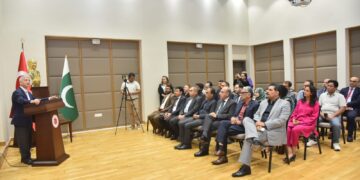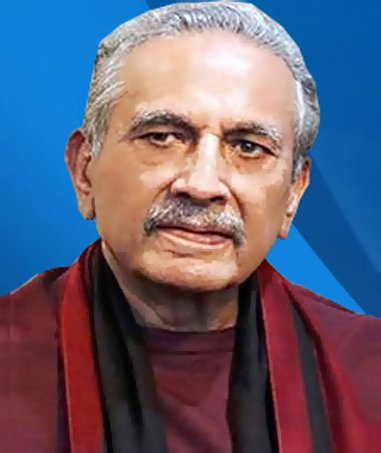Arif Hasan the renowned social scientist of Pakistan vehemently stated that the profession of architecture services the 1 percent of the population and that the practitioners hardly engage in works that instill social change. He further elaborated that the professional bodies also do not come forward and support these initiatives. Yahya Jan from Dubai candidly in his presentation stated that as a practitioner have not engaged with the projects that transforms and impacts lives in particular community – “am guilty of not playing my part.” Dr. Fiona Gray joining in from Australia presented a live project for community but is intrinsically challenged by the authorities. Kamil Khan Mumtaz reflected on life, its generation and how the basic needs are commodified with capitalism. Maria Aslam is her opening remarks mentions:“How is the field responding to the interlocking wicked problem that define our time — climate crisis, structural racism, unaffordable housing, rapid technological shifts and ever growing population?By embracing design with a purpose, we collectivelyhave the opportunity to create visual narratives that celebrate the beauty of nature and advocate for sustainable practices.” From promoting eco-friendly products and services to encouraging responsible consumption, our designs can carry a powerful message of environmental consciousness and impacting lives.
The day long Symposium organized by ADA (Architecture Design Art)—a Karachi-based international publishing house, as their DSR (Designer Social Responsibility) campaign. ADA is a multidisciplinary platform that unites the industry’s leading minds in sharing stories of intervention for a socially unified better world.
Discussions and debates in the day-long symposium revolved around the destiny of architecture, urban planning and more generally the design disciplines in an era that seems to consider only, or at least with absolute priority, the evolution of single modal spaces and related devices spurred by technology. If today, and in the future increasingly so, the theme of life and development is no longer about further densification but resilience and environmental quality—how do designers navigate between aesthetics, sustainability, climate adaptation and depleting natural resources for a better world?
The second session comprised of stellar minds joining this symposium are:Rashid Rana, Faraz Maqsood Hamidi, Seif Al Rashidi (Egypt), Sergii Rodionov (Ukraine)
The speakers discussed city making, place making and environment degradation activism. Faraz Maqsood Hamidi of D’ Hamidi partnership illustrated making a mark through design that is the main idiom of all corporate giants through their campaigns. Seif Al Rashidi from Egupt explored the vernacular essence of retaining a craft that is synonymous to the cultural identity of their region. He shared the contemporizing of the same craft of tent making into main streams market and giving it a new lease to life.Rodionov joining in from Ukraine shared the project based on activism for his home town to inject positive energy and activity by the river front for youth and population at large
Rashid Rana categorially opened his presentation by stating that: “Artists do not have a responsibility, but through their art they connect with the masses and tell stories that capture life styles, communities and the environment.” He presented his work ‘lost on paradise amongst others presented initially in the Karachi Biennale that captures humans desecrating mother earth with deforestation, garbage and plastic accumulation.
The day long seminar with engaging panel discussion explored sustainability not just in the built environment but through the lens of recycle, reuse, reduce and reconsider collectively how we relate to our planet. Maria Aslam highlighted that there is no planet B and that when the Quran mentions that we need to tread lightly on mother earth. This is the essence that requires to be understood individually.
The panelist further commented on recalibrating our minds to the essence of living itself. Culture and language were discussed in the same context to provide meaning and identity in the fast acquisition of globalisation.
As creative industry stalwarts, comprising of architects, artists, and designers together with social scientist, researchers, academia, designers hold the key to influencing perceptions, behaviors, and social change. Inspiring minds and stories unfolded in the day long seminar with panelist adding their rich contribution from academia and practices engaged the audience that was informed by designers that are trying in their own ways to make a difference and impact communities for a better living. To engage in daily mundane practices collectively that does bring about a positive change in society.
ADA, as a distinguished media house, plays a pivotal role in illuminating and informing the creative industry of Pakistan, spanning architecture, design, art, and everything in between. ADA in its sixteenth years stands as an activist portal, amplifying voices for the built environment, equitable spaces, communal frameworks, inclusivity, and championing the creative industry of Pakistan.
The publication ADA;founded by architect Maria Aslam transcends traditional boundaries, transforming into various platforms such as conferences, the DYKYC (Do you know your city) series, and the ADA Awards. The ADAA, the sole Awards from Pakistan dedicated to excellence in the creative industry, serves to celebrate, highlight, and inform the fraternity and Pakistan about the remarkable works emanating from within the country. As ADA embarks on the fourth cycle, slated to open its submissions in May 2024, it continues the commitment to recognizing and promoting excellence in creativity, ingenuity, inclusivity and sustainability.
The day long Symposium organized by ADA (Architecture Design Art)—a Karachi-based international publishing house, as their DSR (Designer Social Responsibility) campaign. ADA is a multidisciplinary platform that unites the industry’s leading minds in sharing stories of intervention for a socially unified better world.
Discussions and debates in the day-long symposium revolved around the destiny of architecture, urban planning and more generally the design disciplines in an era that seems to consider only, or at least with absolute priority, the evolution of single modal spaces and related devices spurred by technology. If today, and in the future increasingly so, the theme of life and development is no longer about further densification but resilience and environmental quality—how do designers navigate between aesthetics, sustainability, climate adaptation and depleting natural resources for a better world?
The second session comprised of stellar minds joining this symposium are:Rashid Rana, Faraz Maqsood Hamidi, Seif Al Rashidi (Egypt), Sergii Rodionov (Ukraine)
The speakers discussed city making, place making and environment degradation activism. Faraz Maqsood Hamidi of D’ Hamidi partnership illustrated making a mark through design that is the main idiom of all corporate giants through their campaigns. Seif Al Rashidi from Egupt explored the vernacular essence of retaining a craft that is synonymous to the cultural identity of their region. He shared the contemporizing of the same craft of tent making into main streams market and giving it a new lease to life.Rodionov joining in from Ukraine shared the project based on activism for his home town to inject positive energy and activity by the river front for youth and population at large
Rashid Rana categorially opened his presentation by stating that: “Artists do not have a responsibility, but through their art they connect with the masses and tell stories that capture life styles, communities and the environment.” He presented his work ‘lost on paradise amongst others presented initially in the Karachi Biennale that captures humans desecrating mother earth with deforestation, garbage and plastic accumulation.
The day long seminar with engaging panel discussion explored sustainability not just in the built environment but through the lens of recycle, reuse, reduce and reconsider collectively how we relate to our planet. Maria Aslam highlighted that there is no planet B and that when the Quran mentions that we need to tread lightly on mother earth. This is the essence that requires to be understood individually.
The panelist further commented on recalibrating our minds to the essence of living itself. Culture and language were discussed in the same context to provide meaning and identity in the fast acquisition of globalisation.
As creative industry stalwarts, comprising of architects, artists, and designers together with social scientist, researchers, academia, designers hold the key to influencing perceptions, behaviors, and social change. Inspiring minds and stories unfolded in the day long seminar with panelist adding their rich contribution from academia and practices engaged the audience that was informed by designers that are trying in their own ways to make a difference and impact communities for a better living. To engage in daily mundane practices collectively that does bring about a positive change in society.

















